Earth: Our Oasis In Space
Earth: Our Oasis in Space

Earth: It’s our oasis in space, the one place we know that harbors life. That makes it a weird place – so far, we haven’t found life anywhere else in the solar system…or beyond. We study our home planet and its delicate balance of water, atmosphere and comfortable temperatures from space, the air, the ocean and the ground.

To celebrate our home, we want to see what you love about our planet. Share a picture, or several, of Earth with #PictureEarth on social media. In return, we’ll share some of our best views of our home, like this one taken from a million miles away by the Earth Polychromatic Imaging Camera (yes, it’s EPIC).

From a DC-8 research plane flying just 1500 feet above Antarctic sea ice, we saw a massive iceberg newly calved off Pine Island Glacier. This is one in a series of large icebergs Pine Island has lost in the last few years – the glacier is one of the fastest melting in Antarctica.

It’s not just planes. We also saw the giant iceberg, known as B-46, from space. Landsat 8 tracked B-46’s progress after it broke off from Pine Island Glacier and began the journey northward, where it began to break apart and melt into the ocean.

Speaking of change, we’ve been launching Earth-observing satellites since 1958. In that time, we’ve seen some major changes. Cutting through soft, sandy soil on its journey to the Bay of Bengal, the Padma River in Bangladesh dances across the landscape in this time-lapse of 30 years’ worth of Landsat images.

Our space-based view of Earth helps us track other natural activities, too. With both a daytime and nighttime view, the Aqua satellite and the Suomi NPP satellite helped us see where wildfires were burning in California, while also tracking burn scars and smoke plumes..

Astronauts have an out-of-this-world view of Earth, literally. A camera mounted on the International Space Station captured this image of Hurricane Florence after it intensified to Category 4.

It’s not just missions studying Earth that capture views of our home planet. Parker Solar Probe turned back and looked at our home planet while en route to the Sun. Earth is the bright, round object.
Want to learn more about our home planet? Check out our third episode of NASA Science Live where we talked about Earth and what makes it so weird.
Make sure to follow us on Tumblr for your regular dose of space: http://nasa.tumblr.com
More Posts from Ocrim1967 and Others
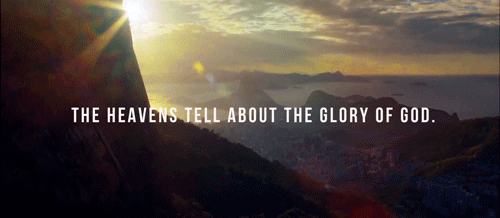





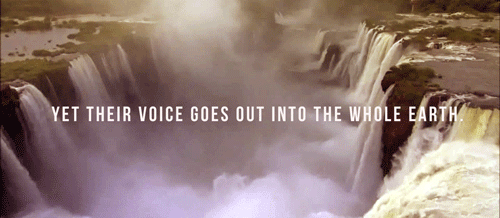
Psalm 19-1-4

11/08/18
Jovian Close Encounter
A multitude of magnificent, swirling clouds in Jupiter’s dynamic North North Temperate Belt is captured in this image from NASA’s Juno spacecraft. Appearing in the scene are several bright-white “pop-up” clouds as well as an anticyclonic storm, known as a white oval. This color-enhanced image was taken at 1:58 p.m. PDT on Oct. 29, 2018 (4:58 p.m. EDT) as the spacecraft performed its 16th close flyby of Jupiter. At the time, Juno was about 4,400 miles (7,000 kilometers) from the planet’s cloud tops, at a latitude of approximately 40 degrees north. Citizen scientists Gerald Eichstädt and Seán Doran created this image using data from the spacecraft’s JunoCam imager. JunoCam’s raw images are available for the public to peruse and to process into image products at: http://missionjuno.swri.edu/junocam.

During its continued mission, NASA’s Juno spacecraft will maintain its 53-day polar orbit around Jupiter. At its closest, Juno passes within 3,000 miles (5,000 kilometers) of Jupiter’s cloud tops once during each 53-day orbit. At the high end of each orbit, Juno is about 5 million miles (8-million kilometers) from the planet – which is just beyond the orbit of the Jovian moon Themisto. Credits: NASA/JPL-Caltec










Ten Solstice Facts That Everyone Should Know
“9.) The solstices are neither the hottest nor coldest days of the year. This one is actually very specific to Earth: the hottest times of the year typically correspond to approximately 6 weeks after the summer solstice, and approximately 6 weeks after the winter solstice. Other planets don’t have this same phenomenon for one very important reason: they don’t have the majority of their surfaces covered in liquid water.
The oceans themselves, being composed of large quantities of water and containing approximately 1,000 times the mass of Earth’s atmospheres, contain a tremendous amount of heat, and are slow to change their temperatures. We might receive more (or less) energy from the Sun on the summer (or winter) solstices, but the oceans require time to heat up or cool down. Global average temperature extremes, therefore, usually occur in early August and February, rather than at the June and December solstices.”
The solstice, Latin for the Sun standing still in the sky, occurs whenever the Earth’s axial tilt reaches a maximum relative to the Earth’s orbital plane around the Sun. With a tilt of 23.5 degrees, but a tilt that’s independent of our elliptical orbit around the Sun, many surprising and counterintuitive facts arise.
Want to know as many of them as possible? Come get this remarkable and fascinating list of educational facts on this year’s solstice: June 21, 2019!










7 Fascinating Facts About 2019’s Only Total Solar Eclipse
“3.) Optimally situated viewers will experience 4 minutes and 33 seconds of totality. With Earth near aphelion and the Moon near perigee, it’s nearly twice the duration of 2017’s eclipse.”
On July 2, 2019, the world will experience a total solar eclipse: the only one of the year. Unlike the famous 2017 solar eclipse which spanned the continental United States, this year’s total solar eclipse occurs almost exactly coincident with both lunar perigee, where the Moon is closest to Earth, and solar aphelion, where the Sun is at its farthest point from Earth. July 2nd is just 2 days before our annual aphelion and 3 days before our monthly perigee, meaning that we’ll get 4 minutes and 33 seconds of totality during maximum eclipse: nearly twice as long as 2017′s maximum totality and the longest total solar eclipse we’ll experience until 2027.
What will we learn? What will we see? And how can you observe it from anywhere in the world? Find out these and more amazing facts before the eclipse passes!

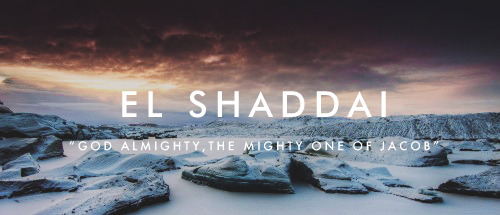








Recommended Resource: The Names of God by Ken Hemphill
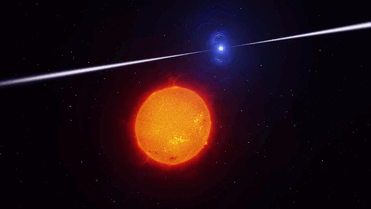
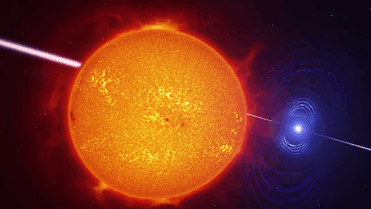
The Scorpii AR system
In the system AR Scorpii a rapidly spinning white dwarf star powers electrons up to almost the speed of light. These high energy particles release blasts of radiation that lash the companion red dwarf star, and cause the entire system to pulse dramatically every 1.97 minutes with radiation ranging from the ultraviolet to radio.
The star system AR Scorpii, or AR Sco for short, lies in the constellation of Scorpius, 380 light-years from Earth. It comprises a rapidly spinning white dwarf, the size of Earth but containing 200,000 times more mass, and a cool red dwarf companion one third the mass of the Sun, orbiting one another every 3.6 hours in a cosmic dance as regular as clockwork.
Read more at: cosmosmagazine & astronomynow


Comet McNaught next to the dome of the NTT on La Silla. The picture was taken in January 2007.
Credit: ESO/H.H.Heyer
What is Gravitational Lensing?
A gravitational lens is a distribution of matter (such as a cluster of galaxies) between a distant light source and an observer, that is capable of bending the light from the source as the light travels towards the observer. This effect is known as gravitational lensing, and the amount of bending is one of the predictions of Albert Einstein’s general theory of relativity.

This illustration shows how gravitational lensing works. The gravity of a large galaxy cluster is so strong, it bends, brightens and distorts the light of distant galaxies behind it. The scale has been greatly exaggerated; in reality, the distant galaxy is much further away and much smaller. Credit: NASA, ESA, L. Calcada
There are three classes of gravitational lensing:
1° Strong lensing: where there are easily visible distortions such as the formation of Einstein rings, arcs, and multiple images.

Einstein ring. credit: NASA/ESA&Hubble
2° Weak lensing: where the distortions of background sources are much smaller and can only be detected by analyzing large numbers of sources in a statistical way to find coherent distortions of only a few percent. The lensing shows up statistically as a preferred stretching of the background objects perpendicular to the direction to the centre of the lens. By measuring the shapes and orientations of large numbers of distant galaxies, their orientations can be averaged to measure the shear of the lensing field in any region. This, in turn, can be used to reconstruct the mass distribution in the area: in particular, the background distribution of dark matter can be reconstructed. Since galaxies are intrinsically elliptical and the weak gravitational lensing signal is small, a very large number of galaxies must be used in these surveys.

The effects of foreground galaxy cluster mass on background galaxy shapes. The upper left panel shows (projected onto the plane of the sky) the shapes of cluster members (in yellow) and background galaxies (in white), ignoring the effects of weak lensing. The lower right panel shows this same scenario, but includes the effects of lensing. The middle panel shows a 3-d representation of the positions of cluster and source galaxies, relative to the observer. Note that the background galaxies appear stretched tangentially around the cluster.
3° Microlensing: where no distortion in shape can be seen but the amount of light received from a background object changes in time. The lensing object may be stars in the Milky Way in one typical case, with the background source being stars in a remote galaxy, or, in another case, an even more distant quasar. The effect is small, such that (in the case of strong lensing) even a galaxy with a mass more than 100 billion times that of the Sun will produce multiple images separated by only a few arcseconds. Galaxy clusters can produce separations of several arcminutes. In both cases the galaxies and sources are quite distant, many hundreds of megaparsecs away from our Galaxy.
Gravitational lenses act equally on all kinds of electromagnetic radiation, not just visible light. Weak lensing effects are being studied for the cosmic microwave background as well as galaxy surveys. Strong lenses have been observed in radio and x-ray regimes as well. If a strong lens produces multiple images, there will be a relative time delay between two paths: that is, in one image the lensed object will be observed before the other image.

As an exoplanet passes in front of a more distant star, its gravity causes the trajectory of the starlight to bend, and in some cases results in a brief brightening of the background star as seen by a telescope. The artistic concept illustrates this effect. This phenomenon of gravitational microlensing enables scientists to search for exoplanets that are too distant and dark to detect any other way.Credits: NASA Ames/JPL-Caltech/T. Pyle
Explanation in terms of space–time curvature

Simulated gravitational lensing by black hole by: Earther
In general relativity, light follows the curvature of spacetime, hence when light passes around a massive object, it is bent. This means that the light from an object on the other side will be bent towards an observer’s eye, just like an ordinary lens. In General Relativity the speed of light depends on the gravitational potential (aka the metric) and this bending can be viewed as a consequence of the light traveling along a gradient in light speed. Light rays are the boundary between the future, the spacelike, and the past regions. The gravitational attraction can be viewed as the motion of undisturbed objects in a background curved geometry or alternatively as the response of objects to a force in a flat geometry.

A galaxy perfectly aligned with a supernova (supernova PS1-10afx) acts as a cosmic magnifying glass, making it appear 100 billion times more dazzling than our Sun. Image credit: Anupreeta More/Kavli IPMU.
To learn more, click here.

A high-definition video camera outside the space station captured stark and sobering views of Hurricane Florence, a Category 4 storm. Image Credit: ESA/NASA–A. Gerst

The scene is a late-spring afternoon in the Amazonis Planitia region of northern Mars. The view covers an area about four-tenths of a mile (644 meters) across. North is toward the top. The length of the dusty whirlwind’s shadow indicates that the dust plume reaches more than half a mile (800 meters) in height. The plume is about 30 yards or meters in diameter. Image credit: NASA/JPL-Caltech/Univ. of Arizona

A false-color image of the Great Red Spot of Jupiterfrom Voyager 1. The white oval storm directly below the Great Red Spot has the approximate diameter of Earth. NASA, Caltech/JPL

The huge storm (great white spot) churning through the atmosphere in Saturn’s northern hemisphere overtakes itself as it encircles the planet in this true-color view from NASA’s Cassini spacecraft. Credit: Cassini Imaging Team, SSI, JPL, ESA, NASA; Color Composite: Jean-Luc Dauvergne

The spinning vortex of Saturn’s north polar storm resembles a deep red rose of giant proportions surrounded by green foliage in this false-color image from NASA’s Cassini spacecraft. Measurements have sized the eye at 1,250 miles (2,000 kilometers) across with cloud speeds as fast as 330 miles per hour (150 meters per second). This image is among the first sunlit views of Saturn’s north pole captured by Cassini’s imaging cameras. Credit: NASA/JPL-Caltech/SSI

Colorized infrared image of Uranus obtained on August 6, 2014, with adaptive optics on the 10-meter Keck telescope; white spots are large storms. Image credit: Imke de Pater, University of California, Berkeley / Keck Observatory images.

Neptune’s Great Dark Spot, a large anticyclonic storm similar to Jupiter’s Great Red Spot, observed by NASA’s Voyager 2 spacecraft in 1989. Credit: NASA / Jet Propulsion Lab

This true color image captured by NASA’S Cassini spacecraft before a distant flyby of Saturn’s moon Titan on June 27, 2012, shows a south polar vortex, or a swirling mass of gas around the pole in the atmosphere. Image credit: NASA/JPL-Caltech/Space Science Institute

This artist’s concept shows what the weather might look like on cool star-like bodies known as brown dwarfs. These giant balls of gas start out life like stars, but lack the mass to sustain nuclear fusion at their cores, and instead, fade and cool with time.
New research from NASA’s Spitzer Space Telescope suggests that most brown dwarfs are racked with colossal storms akin to Jupiter’s famous “Great Red Spot.” These storms may be marked by fierce winds, and possibly lightning. The turbulent clouds might also rain down molten iron, hot sand or salts – materials thought to make up the cloud layers of brown dwarfs.
Image credit: NASA/JPL-Caltech/University of Western Ontario/Stony Brook University

In this image, the nightmare world of HD 189733 b is the killer you never see coming. To the human eye, this far-off planet looks bright blue. But any space traveler confusing it with the friendly skies of Earth would be badly mistaken. The weather on this world is deadly. Its winds blow up to 5,400 mph (2 km/s) at seven times the speed of sound, whipping all would-be travelers in a sickening spiral around the planet. And getting caught in the rain on this planet is more than an inconvenience; it’s death by a thousand cuts. This scorching alien world possibly rains glass—sideways—in its howling winds. The cobalt blue color comes not from the reflection of a tropical ocean, as on Earth, but rather a hazy, blow-torched atmosphere containing high clouds laced with silicate particles. Image Credit: ESO/M. Kornmesser
World Teacher Appreciation Day!
On #WorldTeachersDay, we are recognizing our two current astronauts who are former classroom teachers, Joe Acaba and Ricky Arnold, as well as honoring teachers everywhere. What better way to celebrate than by learning from teachers who are literally out-of-this-world!
During the past Year of Education on Station, astronauts connected with more than 175,000 students and 40,000 teachers during live Q & A sessions.
Let’s take a look at some of the questions those students asked:
The view from space is supposed to be amazing. Is it really that great and could you explain?
Taking a look at our home planet from the International Space Station is one of the most fascinating things to see! The views and vistas are unforgettable, and you want to take everyone you know to the Cupola (window) to experience this. Want to see what the view is like? Check out earthkam to learn more.
What kind of experiments do you do in space?
There are several experiments that take place on a continuous basis aboard the orbiting laboratory - anything from combustion to life sciences to horticulture. Several organizations around the world have had the opportunity to test their experiments 250 miles off the surface of the Earth.
What is the most overlooked attribute of an astronaut?
If you are a good listener and follower, you can be successful on the space station. As you work with your team, you can rely on each other’s strengths to achieve a common goal. Each astronaut needs to have expeditionary skills to be successful. Check out some of those skills here.
Are you able to grow any plants on the International Space Station?
Nothing excites Serena Auñón-Chancellor more than seeing a living, green plant on the International Space Station. She can’t wait to use some of the lettuce harvest to top her next burger! Learn more about the plants that Serena sees on station here.
What food are you growing on the ISS and which tastes the best?
While aboard the International Space Station, taste buds may not react the same way as they do on earth but the astronauts have access to a variety of snacks and meals. They have also grown 12 variants of lettuce that they have had the opportunity to taste.
Learn more about Joe Acaba, Ricky Arnold, and the Year of Education on Station.
Make sure to follow us on Tumblr for your regular dose of space: http://nasa.tumblr.com.
-
 looookingup reblogged this · 11 months ago
looookingup reblogged this · 11 months ago -
 bernoulli1234321 liked this · 1 year ago
bernoulli1234321 liked this · 1 year ago -
 glenthamert liked this · 1 year ago
glenthamert liked this · 1 year ago -
 elrondtheelf liked this · 1 year ago
elrondtheelf liked this · 1 year ago -
 floridaboiler reblogged this · 1 year ago
floridaboiler reblogged this · 1 year ago -
 nsfshews liked this · 1 year ago
nsfshews liked this · 1 year ago -
 floridaboiler reblogged this · 2 years ago
floridaboiler reblogged this · 2 years ago -
 73anthrax liked this · 3 years ago
73anthrax liked this · 3 years ago -
 ddrj reblogged this · 3 years ago
ddrj reblogged this · 3 years ago -
 ddrj liked this · 3 years ago
ddrj liked this · 3 years ago -
 spacefrog23 liked this · 3 years ago
spacefrog23 liked this · 3 years ago -
 floridaboiler reblogged this · 3 years ago
floridaboiler reblogged this · 3 years ago -
 floridaboiler liked this · 3 years ago
floridaboiler liked this · 3 years ago -
 franquikoy liked this · 3 years ago
franquikoy liked this · 3 years ago -
 entropymuffin reblogged this · 4 years ago
entropymuffin reblogged this · 4 years ago -
 excitableboy407 reblogged this · 4 years ago
excitableboy407 reblogged this · 4 years ago -
 floridaboiler reblogged this · 4 years ago
floridaboiler reblogged this · 4 years ago -
 theofficialdeannawinchester liked this · 4 years ago
theofficialdeannawinchester liked this · 4 years ago -
 polishedsins liked this · 4 years ago
polishedsins liked this · 4 years ago -
 cernunnos1990 liked this · 4 years ago
cernunnos1990 liked this · 4 years ago -
 thethirdman8 liked this · 4 years ago
thethirdman8 liked this · 4 years ago -
 previous-abandonment liked this · 4 years ago
previous-abandonment liked this · 4 years ago -
 za-of-emalza reblogged this · 4 years ago
za-of-emalza reblogged this · 4 years ago -
 za-of-emalza liked this · 4 years ago
za-of-emalza liked this · 4 years ago -
 jolenequek reblogged this · 4 years ago
jolenequek reblogged this · 4 years ago -
 jolenequek liked this · 4 years ago
jolenequek liked this · 4 years ago -
 2194teddy liked this · 4 years ago
2194teddy liked this · 4 years ago -
 annoyinglyvague liked this · 4 years ago
annoyinglyvague liked this · 4 years ago